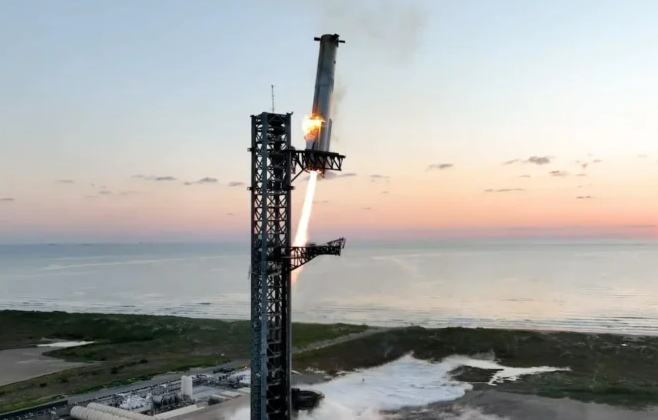
©Anadolu via Getty Images
Vocabulary:
I will read the words, meanings, and sample sentences. Then, repeat after me.
- accomplishment /uh-KOM-plish-muhnt/
- demonstrate /DEM-uhn-streyt/
- pivotal /PIV-uh-tl/
- operational /op-uh-REY-shuh-nl/
- viability /vahy-uh-BIL-i-tee/
[noun] – something that has been achieved successfully, especially after a lot of effort
Winning the national championship was a remarkable accomplishment for the team.
[verb] – to show or make something clear
The teacher used a video to demonstrate the importance of recycling to the students.
[adjective] – central and important
A pivotal scene in the movie changed the characters’ motivations dramatically.
[adjective] – if a system is operational, it is working
The military base became operational after the completion of the training exercises.
[noun] – the ability to live, grow, or function successfully; practicality
The viability of the project depends on securing sufficient funding and resources.
Article reading:
Please read the whole article. Then, I will check your pronunciation and intonation.
On October 13, 2024, SpaceX achieved a significant milestone by successfully executing a test flight of its Starship rocket, which included the groundbreaking feat of catching the returning booster using mechanical arms at the launch pad. The nearly 400-foot (121-meter) tall Starship lifted off at sunrise from the southern tip of Texas, near the Mexican border. Unlike earlier attempts that ended in failure, this test flight represented a notable advancement. The previous flight in June was considered a success, but this latest demonstration showcased improved capabilities, especially in landing procedures. The CEO of SpaceX, Elon Musk, expressed enthusiasm for this accomplishment, referring to it as “science fiction without the fiction part.” The successful capture of the 232-foot (71-meter) stainless steel booster demonstrated the rocket’s potential for future missions to the moon and Mars.
The booster returned to the launch pad approximately seven minutes after liftoff, under the careful supervision of the flight director. The tower’s mechanical arms, informally called “chopsticks,” securely caught the booster, marking a pivotal moment in space exploration. According to NASA Administrator Bill Nelson, this advancement is crucial for NASA’s Artemis program, which aims to return astronauts to the moon’s south pole. Continued testing of the Starship will be essential for realizing this ambitious goal. Meanwhile, the Starship spacecraft itself reached an altitude of over 130 miles (212 kilometers) before successfully landing in the Indian Ocean, demonstrating its operational viability. SpaceX aims to replicate its successful booster recovery practices with the Starship, which features 33 methane-fueled engines, representing the largest and most powerful rocket ever constructed.
The booster returned to the launch pad approximately seven minutes after liftoff, under the careful supervision of the flight director. The tower’s mechanical arms, informally called “chopsticks,” securely caught the booster, marking a pivotal moment in space exploration. According to NASA Administrator Bill Nelson, this advancement is crucial for NASA’s Artemis program, which aims to return astronauts to the moon’s south pole. Continued testing of the Starship will be essential for realizing this ambitious goal. Meanwhile, the Starship spacecraft itself reached an altitude of over 130 miles (212 kilometers) before successfully landing in the Indian Ocean, demonstrating its operational viability. SpaceX aims to replicate its successful booster recovery practices with the Starship, which features 33 methane-fueled engines, representing the largest and most powerful rocket ever constructed.
Discussion Questions:
I will read each question. Then, please answer them.
- Have you ever witnessed a significant technological achievement in your life? If so, how did it make you feel? If not, what technological advancements do you hope to see in the future?
- Have you participated in any events that involved space exploration or technology? If so, what was your experience like? If not, would you be interested in attending such an event? Why or why not?
- Do you agree that advancements in space technology can lead to important discoveries for humanity?
- How might the achievements of SpaceX influence the future of space travel? Do you believe this could encourage more private companies to enter the space industry?
- What challenges do you think future space missions might face as technology continues to advance? How can these challenges be addressed to ensure successful outcomes?
Summarization
Please summarize the whole article using your own words and expressions. You will have one minute to prepare before you answer.
Describe:
Please explain the definition of each word listed below based on your understanding. You can provide example sentences if needed.
- milestone
- previous
- Mars
- approximately
- replicate